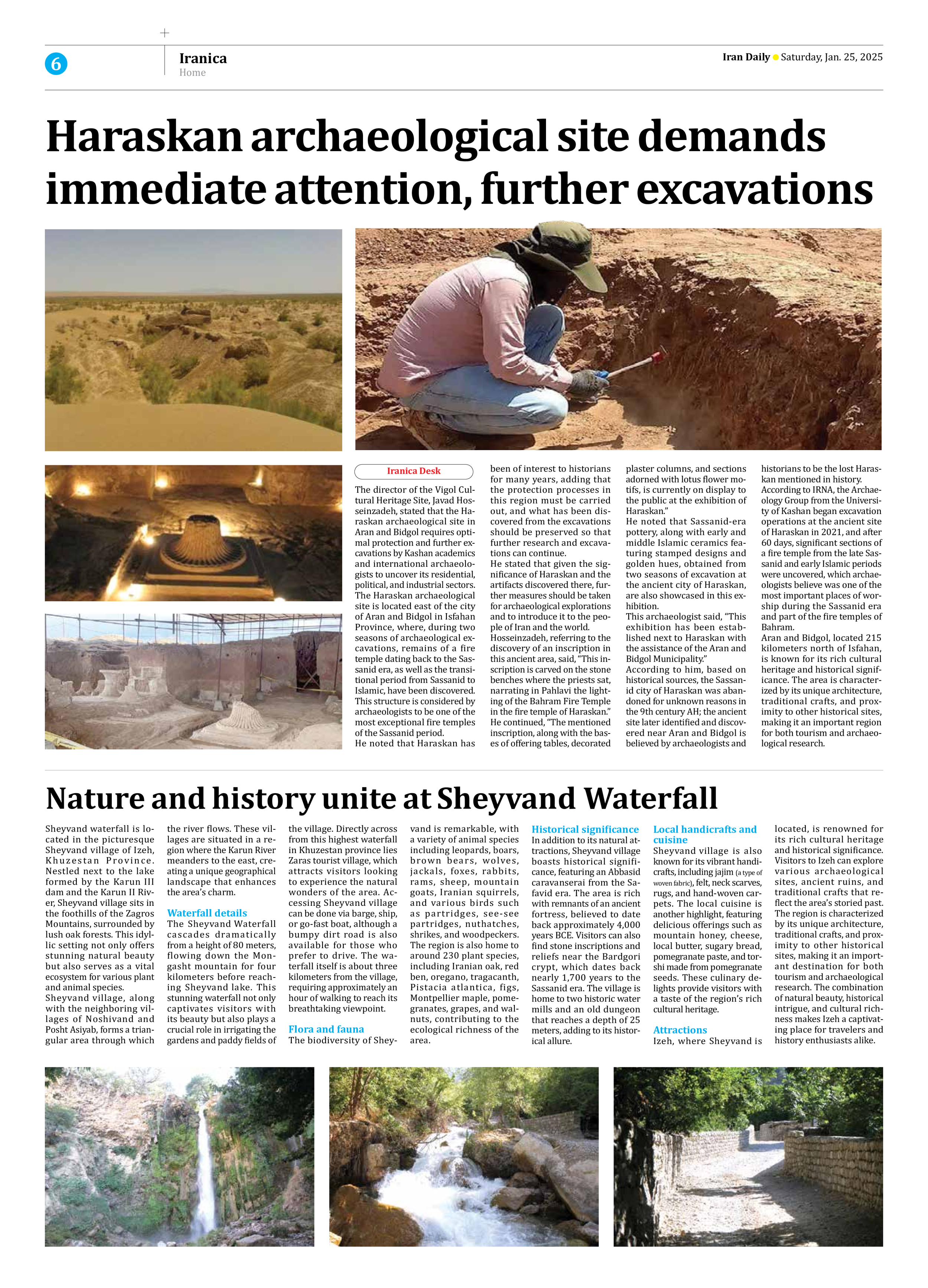
Haraskan archaeological site demands immediate attention, further excavations
The director of the Vigol Cultural Heritage Site, Javad Hosseinzadeh, stated that the Haraskan archaeological site in Aran and Bidgol requires optimal protection and further excavations by Kashan academics and international archaeologists to uncover its residential, political, and industrial sectors.
The Haraskan archaeological site is located east of the city of Aran and Bidgol in Isfahan Province, where, during two seasons of archaeological excavations, remains of a fire temple dating back to the Sassanid era, as well as the transitional period from Sassanid to Islamic, have been discovered. This structure is considered by archaeologists to be one of the most exceptional fire temples of the Sassanid period.
He noted that Haraskan has been of interest to historians for many years, adding that the protection processes in this region must be carried out, and what has been discovered from the excavations should be preserved so that further research and excavations can continue.
He stated that given the significance of Haraskan and the artifacts discovered there, further measures should be taken for archaeological explorations and to introduce it to the people of Iran and the world.
Hosseinzadeh, referring to the discovery of an inscription in this ancient area, said, “This inscription is carved on the stone benches where the priests sat, narrating in Pahlavi the lighting of the Bahram Fire Temple in the fire temple of Haraskan.”
He continued, “The mentioned inscription, along with the bases of offering tables, decorated plaster columns, and sections adorned with lotus flower motifs, is currently on display to the public at the exhibition of Haraskan.”
He noted that Sassanid-era pottery, along with early and middle Islamic ceramics featuring stamped designs and golden hues, obtained from two seasons of excavation at the ancient city of Haraskan, are also showcased in this exhibition.
This archaeologist said, “This exhibition has been established next to Haraskan with the assistance of the Aran and Bidgol Municipality.”
According to him, based on historical sources, the Sassanid city of Haraskan was abandoned for unknown reasons in the 9th century AH; the ancient site later identified and discovered near Aran and Bidgol is believed by archaeologists and historians to be the lost Haraskan mentioned in history.
According to IRNA, the Archaeology Group from the University of Kashan began excavation operations at the ancient site of Haraskan in 2021, and after 60 days, significant sections of a fire temple from the late Sassanid and early Islamic periods were uncovered, which archaeologists believe was one of the most important places of worship during the Sassanid era and part of the fire temples of Bahram.
Aran and Bidgol, located 215 kilometers north of Isfahan, is known for its rich cultural heritage and historical significance. The area is characterized by its unique architecture, traditional crafts, and proximity to other historical sites, making it an important region for both tourism and archaeological research.







